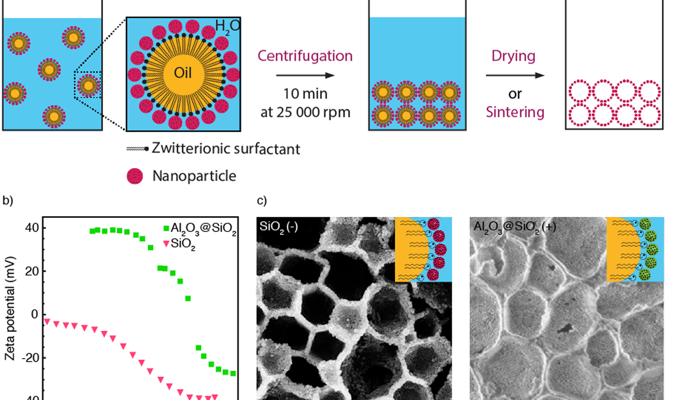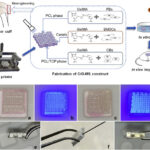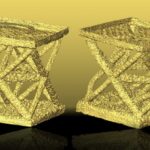

Hierarchical porous materials are commonly found in nature and have numerous applications as well, such as catalytic supports, biological scaffolds and lightweight structures. 3D printing has allowed for the fabrication of porous materials in the forms of lattices, cellular structures and foams across multiple length scales. However, according to a group of researchers in a paper entitled “3D printing of sacrificial templates into hierarchical porous materials,” current approaches “do not allow for the fast manufacturing of bulk porous materials featuring pore sizes that span broadly from macroscopic dimensions down to the nanoscale.”
In the research paper, the authors describe how they developed ink formulations to enable 3D printing of hierarchical materials displaying porosity at the nano-, micro- and macro-scales.
“Here, we 3D print inks that consist of nanoemulsions and other microtemplates to produce complex-shaped hierarchical materials with controlled pores ranging from hundreds of nanometers to millimetres in size,” the researchers state. “The pore size of the resulting porous materials can be easily tuned through the selection of the printing path and the size of the pore templating building blocks. Submicron pores are generated from particle-stabilized nanoemulsions, whereas larger droplets or sacrificial polymer particles are used to create pores in a size range varying from 10 to 100 µm. Finally, the macroscopic complex shape and the large-scale cellular architecture of the hierarchical porous material is determined by the 3D printing process.”

The researchers formed stable nanodroplets through a two-step emulsification process. These nanodroplets are stable enough to be concentrated by ultracentrifugation and form a dense jammed template that can be directly converted into a nanoporous structure upon drying or sintering depending on the oil volatility.
“Because the nanoparticles form a dense layer on the surface of the precursor droplets, closed nanopores are often obtained after drying and sintering,” the researchers continue. “However, open pores can also form if the emulsions are slightly destabilized during processing to generate droplet surfaces that are only partially covered by particles. For the emulsions investigated in this work, we found that such slight destabilization is possible by replacing corn oil by decane as the dispersed phase. The ability to tune the process to generate either open or close porosity after sintering enables tailoring of the porous structure according to the properties required by the aimed application.”
Since the nano- and micro-porosity are generated from the self-assembly of templating droplets and particles within the ink, as opposed to the slow sequential depositing of material, the 3D printing process is simple and fast. Because they are susceptible to coalescence during ink preparation, the templating droplets need to be stabilized by particles that will later form the walls of the pores created upon drying and consolidation.
“The zwitterionic nature of the surfactant used to promote this stabilization mechanism allows for the use of particles with a variety of distinct chemistries,” the researchers conclude. “Moreover, the dried printed structure can be consolidated either chemically or via heat treatment, depending on the ink formulation. Combined with the complex shaping capabilities of 3D printing, these features make the process highly tunable and open several new possibilities for the design and digital fabrication of hierarchical porous materials for a variety of applications.”
Authors of the paper include Lauriane Alison, Stefano Menasce, Florian Bouville, Elena Tervoort, Iacopo Mattich, Allesandro Ofner and André R. Studart.
Discuss this and other 3D printing topics at 3DPrintBoard.com or share your thoughts below.
When it comes to 3D real estate visualization in the USA, our service provides the perfect solution for bringing property listings to life. Through our platform, you can easily access cutting-edge 3D renderings that showcase your real estate projects in a way that attracts potential buyers and investors. Whether it's residential, commercial, or mixed-use properties, our team of experts uses advanced technology to create immersive visualizations that highlight the best features of your property, making it easier for clients to imagine the space as their own.
Through our website, you can quickly get high-quality 3D real estate visualizations that are tailored to your specific needs. With our help, you'll stand out in the competitive real estate market by offering potential buyers a realistic, interactive view of your property. Our efficient process ensures a fast turnaround time, while our attention to detail guarantees that every aspect of the property is represented accurately, giving you a powerful marketing tool to promote your real estate listings.






